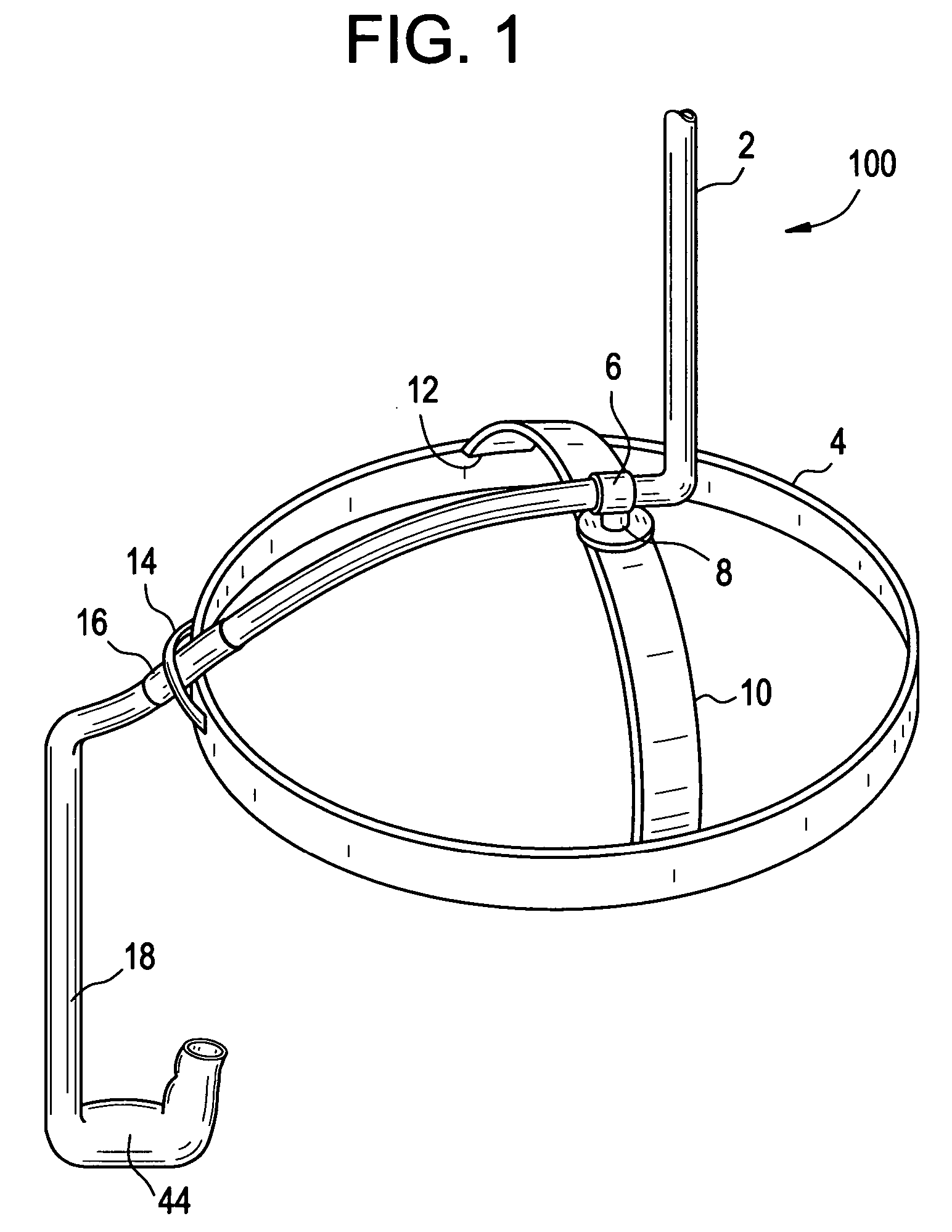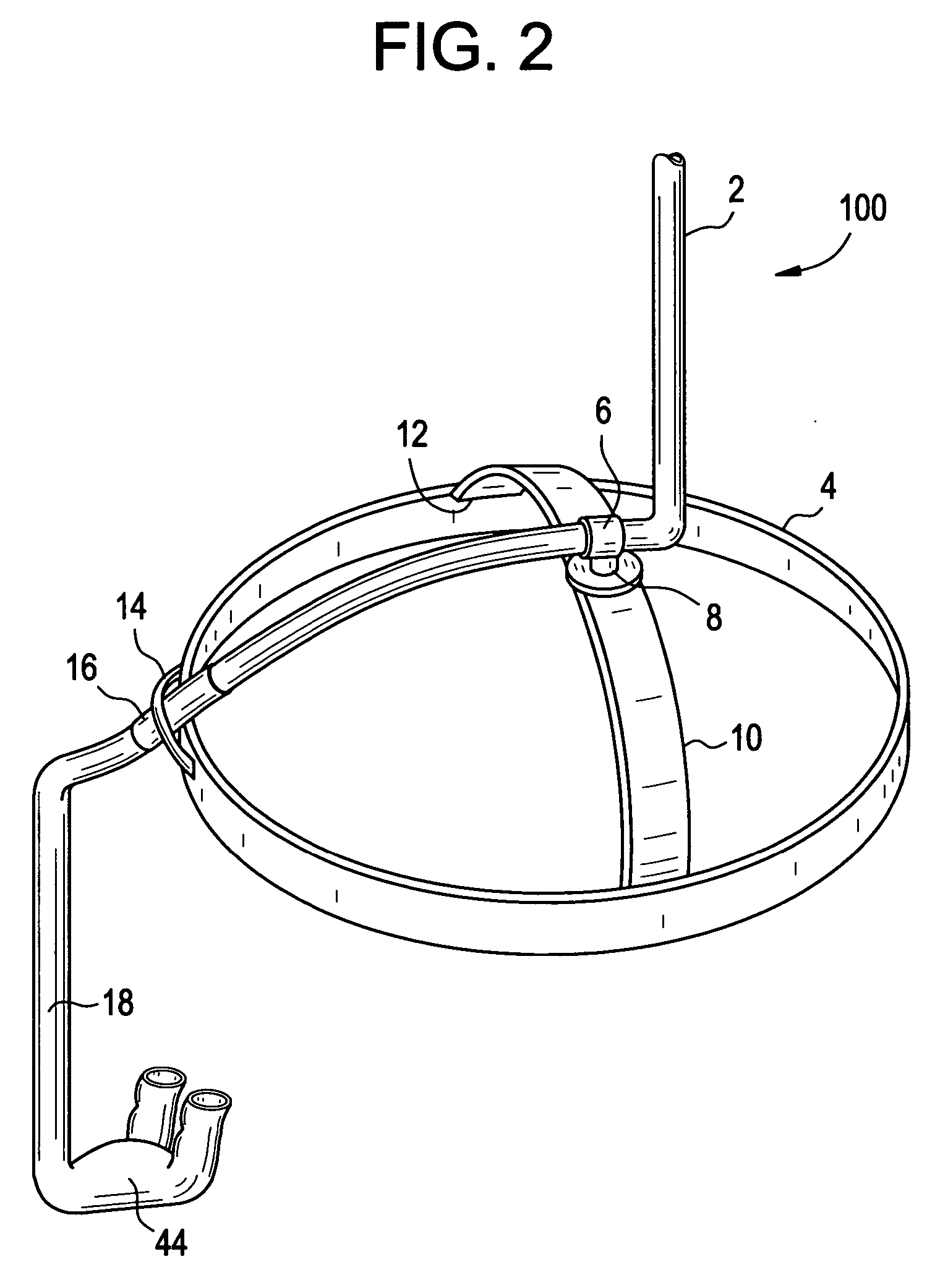Nasal ventilation interface
a ventilation interface and nasal tube technology, applied in the direction of breathing masks, inhalators, breathing protection, etc., can solve the problems of obstructive sleep apnea syndrome, affecting the sleep quality of patients, and affecting the quality of life of patients,
- Summary
- Abstract
- Description
- Claims
- Application Information
AI Technical Summary
Problems solved by technology
Method used
Image
Examples
Embodiment Construction
[0014] A first exemplary embodiment of the present invention provides a nasal ventilation interface including a cannula connectable to a source of ventilation. The nasal ventilation interface further includes at least one curved nasal insert and a central reservoir with at least one exhaust port.
[0015] In another exemplary embodiment the present invention provides a nasal ventilation interface including a headgear with a cross bar configured to receive tubing. The nasal ventilation interface further includes a cannula with at least one substantially curved nasal insert and at least one exhaust port. The tubing may be configured to pass through the headgear and is connected to a source of ventilation gas at a first end and connected with the cannula at a second end.
[0016] In yet another exemplary embodiment the present invention provides a method of wearing a nasal ventilation interface. The method includes connecting tubing to a source of ventilation at a first end. Connecting the...
PUM
 Login to View More
Login to View More Abstract
Description
Claims
Application Information
 Login to View More
Login to View More - Generate Ideas
- Intellectual Property
- Life Sciences
- Materials
- Tech Scout
- Unparalleled Data Quality
- Higher Quality Content
- 60% Fewer Hallucinations
Browse by: Latest US Patents, China's latest patents, Technical Efficacy Thesaurus, Application Domain, Technology Topic, Popular Technical Reports.
© 2025 PatSnap. All rights reserved.Legal|Privacy policy|Modern Slavery Act Transparency Statement|Sitemap|About US| Contact US: help@patsnap.com



